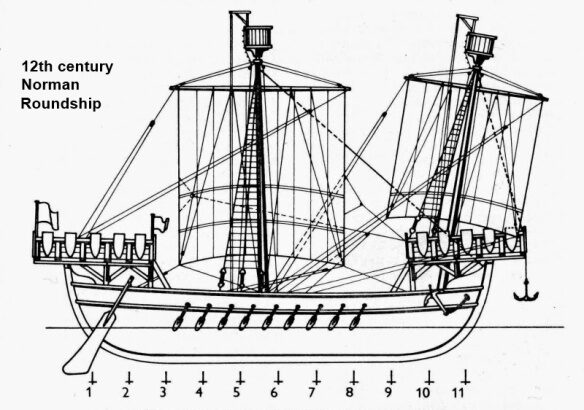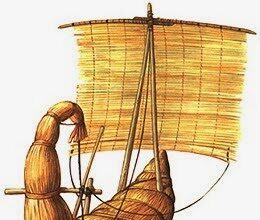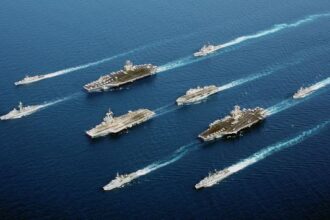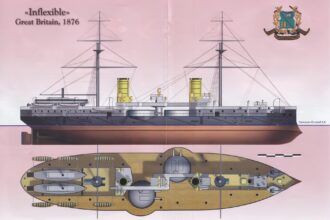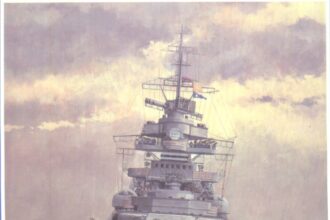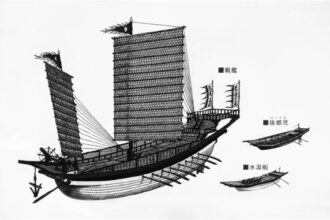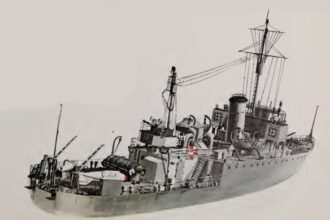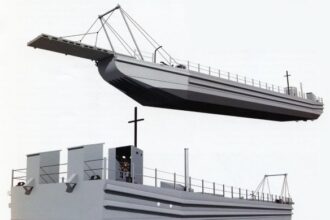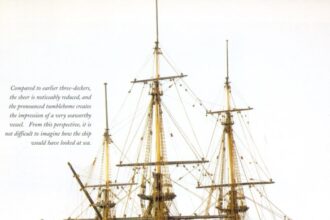Newsletter
Get the latest from Weapons and Warfare right to your inbox.
Follow Us
Explore
Shipbuilding
SHIPS AND THE SEA II
Only in the fifteenth century did a combination of scientific and technological advances—the magnetic compass and the astrolabe, better maps, commercially available navigational charts, and ships of stronger construction, superior design, and improved rigs—allow mariners to challenge, though by no means to conquer, the seas. Only then did open ocean navigation become a regular, practical, and potentially year-round, though still…
Most Recent
HMS Inflexible (1876)
Inflexible, 1876, as completed with sails for training. Note the torpedo launching chute over the stem. The design concept of Inflexible was of a raft, the citadel, which would float if the ends were destroyed or flooded. The ends were closely subdivided and protected by a thick deck. A light,…
Fire Direction and Radar Equipment on the Bismarck Class BBs
Weapons and Fire Control Systems The designers of the Bismarck class adhered to the tried and tested main armament arrangement of two twin turrets forward and aft, the rearmost of each superfiring. The reason for this was the better field of fire and more effective sequence of salvos. The smaller…
KUBLAI KHAN’S FLEET
Preliminary reconstruction of one of Khubilai Khan’s lost ships. The result of generations of Chinese engineering and development, these were the world’s most advanced warships duringthe Medieval period. He squandered his naval advantage with poorly executed attacks on Japan, Vietnam, and Java. Khubilai Khan’s Lost Fleet In Search of a…
NEPTUNE’S INVASION FLEET
Bangor-Class Minesweeper (reciprocating engine): A wide minesweeper class-it formed a large part of the Neptune minesweeper strength of 287. Bangor-class ‘sweepers were built in three versions-diesel, turbine, and reciprocating engines. Displacement: 672 tons. Crew: 60. Speed: 16 knots. Armament: 1 x 3-in, 1 x 40-mm, 4 x .303-in mg RAF…
‘X Lighters’
A number of large purpose-built `X Lighters’ had been developed by the Navy in the First World War and these contributed to the landings at Suvla Bay in 1915. Although something of a military sideshow, the campaign at Gallipoli also made a contribution to the acceptance of the internal combustion…
Royal Navy Ships 1714–1815 I
It was for long an article of faith among naval historians that eighteenth-century British warships were inferior to their French and Spanish opponents, because British shipwrights remained wedded to craft traditions, while their Continental rivals were men of education who applied mathematics and science to the solution of their problems.…
Most Popular
American Civil War Ironclads
At the outset both sides were militarily weak. The North did have a clear advantage…
MEDIEVAL SHIPBUILDING
Early medieval Europeans received from their predecessors two broad ranges of wooden shipbuilding traditions, one…
Early Athenian Ships I
Athenians had been seafarers since earliest times, but their ventures were always overshadowed by maritime…
